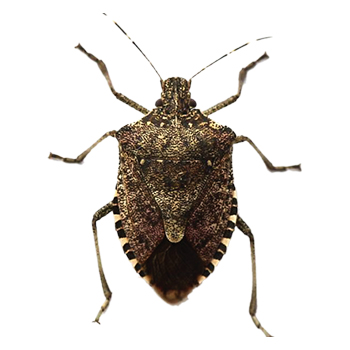How to Get Rid of a Stinkbug Infestation

The first time you catch wind of the pungent odor produced by a stink bug is the day you’ll realize how important it is to keep this pest out of your home or business. Not only do stink bugs stink, but these bugs can also destroy plants indoors and outdoors in a short window of time. First collected in the U.S. in the mid-1990s in Allentown, PA, this invasive species quickly spread to surrounding northeastern states, including New Jersey, Delaware, and Maryland. Stink bugs have since been confirmed in 44 different states and the District of Columbia.
To protect your home or business from stink bugs, you need to learn about the behavior of this pest, take steps for prevention, and find effective treatment options should an infestation occur.
What Are Stink Bugs?
Pest control experts at Viking Pest explain stink bugs are large insects with six legs, antennae, and a generally triangular shape that resembles a medieval shield. The bugs are believed to have originated from eastern Asia and were accidentally introduced to the U.S. in the mid-1990s by hitching a ride on a packing crate or piece of heavy machinery.
Stink bugs get their name from the pungent odor they emit from a gland on their abdomen when they feel threatened. Depending on the type of stink bug you’re dealing with, the odor will differ, but it’s been described as similar to the strong scent of herbs and spices. The stink bug diet consists of plants with a particular fondness for weeds including Russian thistle, which is present in New Jersey, Pennsylvania, Maryland, and Delaware, explain local exterminators at Viking Pest.
How Do I Identify Stink Bugs?
Stink bug prevention and stink bug treatment begin with proper identification of the pest. While different variants of the bug exist, most look similar with the main differences being slight variations in color and size. Viking Pest’s certified entomologist, Craig, explains young stink bugs are small in size, but adults can grow up to just under an inch. The tell-tale giveaway of a stink bug is the triangular shield-like shape of the body. Stink bugs are nearly as wide as they are long, especially when you take their protruding legs into account. Adults are typically green during the summer months and shift to a mottled grayish-brown during the fall stimonths.
Another way you can identify the presence of stink bugs is by identifying their eggs laid on the underside of leaves around your home or business. According to the EPA, adult female stink bugs lay groups of 20-30 eggs between May and August. The eggs are laid in clusters, are green or yellow in color, and resemble an elliptical shape.
How Do I Get Stink Bugs?
Unfortunately, stink bugs, especially in the northeast, run rampant. If your home or business is targeted by these pests, you’ll first notice them in the fall months and usually in large numbers. Be aware that you may see live or dead stink bugs during this period. Both of these are a sign of an active infestation and should be addressed immediately.
Pest control experts at Viking Pest state the stink bugs spend most of the year outdoors until the colder winter months when they begin to seek warmer shelter indoors. Initially, the bugs will be attracted to the plants you have surrounding your home. From there, the path of least resistance to warmer weather is inside of your building.
What Are The Effects of Stink Bugs In and Around My Home or Business?
Without proper stink bug treatment, your New Jersey, Pennsylvania, Maryland, or Delaware home or business may endure several effects from these invasive pests. The most widely known effect is the damage these plant-eating bugs cause to plants. As stink bugs use a needle-like mouthpart to pull fluids from the stems, seeds, and leaves of plants, immediate and future damage can occur. These include:
- Physical damage and destruction of plants
- Production of stunted plants with abnormal growths and misshapen leaves
- Damage to crops for farmers and gardeners
- The inability of young seedlings to continue growth
Additionally, while not poisonous, stink bugs can also make pets and people sick and vomit if ingested. For business owners, having odorous bugs taking up residency is not only unsanitary, but it is unpleasant to customers and guests and may put you at risk for unfavorable health department reviews and ratings. While stink bugs are not known to carry diseases, they can still have a profound effect on your quality of life and business operations.
How Do I Prevent Stink Bugs?
The prevention of stink bugs is best handled through the expertise of a professional. Preventing stink bugs on the outside of your home will require professional assistance. That being said, there are steps you can take to limit your exposure to these pests inside your home or business. These steps that you can take today include:
- Sealing off doors, windows, and cracks to prevent intrusion. Utilize caulk, weather stripping, and door sweeps for the best results.
- Make sure your chimney is safely capped or screened.
- Educate your family and employees on the importance of keeping doors and windows closed as much as possible. Stink bugs will not turn down an open invitation, especially during colder winter months.
- Check your building’s foundation for cracks or openings where bugs could make their entry.
- Keep piles of vegetation, shrubbery, and debris clear of your home’s foundation and entry points.
- Address infestations and get rid of stink bugs at the first sign of a problem. Remember, only finding dead bugs is still a sign of an active problem.
- Stink bug control is an on-going and yearly problem. Make sure to regularly utilize the steps listed here.
- When in doubt, seek the help of a professional, like Viking Pest.















